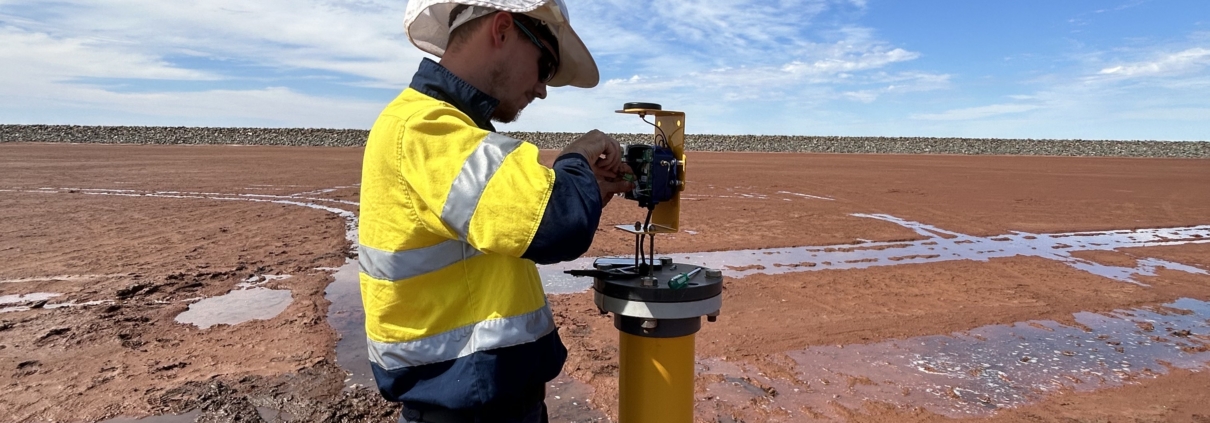Why a Borehole Needs a Piezometer: Understanding Subsurface Water Behaviour
Boreholes act as a window into what’s happening beneath the surface. But in order too get the best insight, it is important to use the right instrumentation.
A piezometer is one of the tools best suited to extracting meaningful and actionable data form a borehole. They measure pore water pressure, helping engineers and asset managers understand how water is moving through soil and rock layers.
At Monitel, we have integrated piezometers into many borehole monitoring systems across Western Australia. Our solutions help you make safe, informed project decisions and are designed in line with regulatory requirements.
This article explains why piezometers are so useful in boreholes and how they explain subsurface water behaviour. If you are unsure about what is required on your site, you can speak with a member of our team at admin@monitel.com.au or call (08) 6219 8284.
What Is a Piezometer?
A piezometer is a device used for measuring ground water levels and pressures. These factors influence how stable or mobile the surrounding ground is, making piezometers a key instrument in geotechnical and environmental monitoring.
In borehole applications, piezometers are installed at specific depths to capture pressure conditions within that area. By installing one, stakeholders can monitor how groundwater behaves over time and whether it is causing instability, seepage or drainage issues.
What Is Subsurface Water Behaviour?
Subsurface water refers to groundwater and the pressure it exerts within soil or rock pores. Known as pore water pressure, this affects the stability, strength and drainage characteristics of the surrounding ground.
Variations in pore water pressure can be caused by rainfall, construction activity or dewatering and often lead to slope instability, foundation settlement or unexpected seepage.
Continual monitoring of subsurface water behaviour will help stakeholders:
- Detect risks early
- Develop informed design and construction plans
- Comply with environmental and safety regulations
Why Should Piezometers be Installed in Boreholes?
Boreholes are commonly drilled for site investigations and long-term monitoring. Installing a piezometer in a borehole transforms it from a passive observation point into an ‘active monitoring system’.
An ‘active’ borehole will provide the following benefits:
Accurate Pressure Measurements at Depth
In boreholes, piezometers are installed at targeted depths to monitor specific geological layers. This allows users to track groundwater levels and pressure changes where they are most relevant to a structure. That might be below a foundation, within a dam wall or through a clay/sand interface.
Risk Detection for Stability and Safety
Works that cause ground movement can create a risk of pore pressure volatility. In applications like slope stability assessments and tailings dam monitoring, piezometer data can offer early warnings of changing pressures and prevent structural damage.
Environmental and Regulatory Compliance
Piezometers support compliance with WA legislation, including:
- WHS (Mines) Regulations 2022
- Mines Safety and Inspection Regulations 1995
- DWER licensing conditions
Monitoring groundwater conditions in and around boreholes is often a requirement for environmental impact assessments, water management plans and mining proposals.
Long-Term Trend Analysis
Piezometers installed for extended periods can track seasonal groundwater fluctuations, effects of nearby construction and drainage performance. This information supports future development decisions.
Choosing the Right Piezometer for a Borehole
Different piezometers suit different borehole setups. Below we have listed some of the sensors in our piezometer range and their ideal applications:
- Vibrating Wire Piezometers (VWPs): Ideal for long-term automated monitoring, with high accuracy and signal stability.
- Standpipe Piezometers: Simple and cost-effective for manual level readings, typically installed at depths of 5–30 m.
- Pressure Transducers: Provide continuous electrical output for integration with remote monitoring systems.
- Multi-Point Piezometers: Allow for pressure profiling at multiple depths within the same borehole.
Our team will help you select and install the most suitable sensor based on project requirements, site conditions and budget constraints. For more information, you can read our article ‘Choosing the Right Piezometer Depth’.
Enquire Today for Borewell Piezometer Advice
Piezometers are perfect for extracting accurate and meaningful data from boreholes. They provide the information needed to assess groundwater behaviour, manage geotechnical risk and meet compliance obligations.
if you would like to speak to our team about borehole monitoring or a piezometer system, you can contact admin@monitel.com.au or call (08) 6219 8284




Leave a Reply
Want to join the discussion?Feel free to contribute!